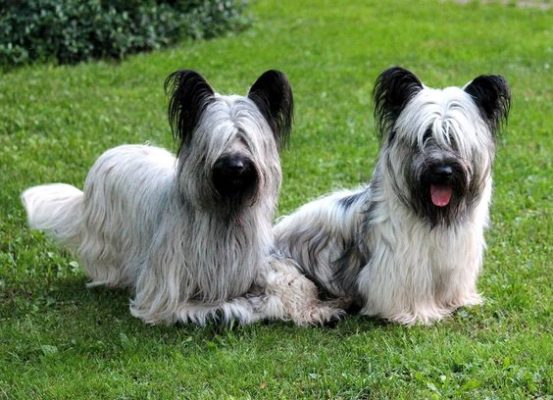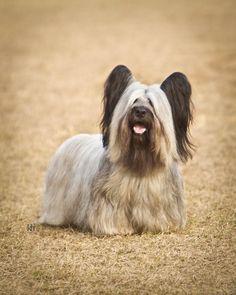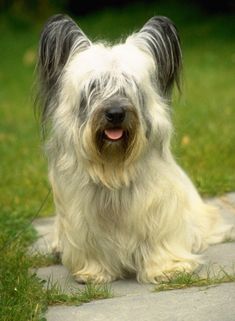Skye Terrier
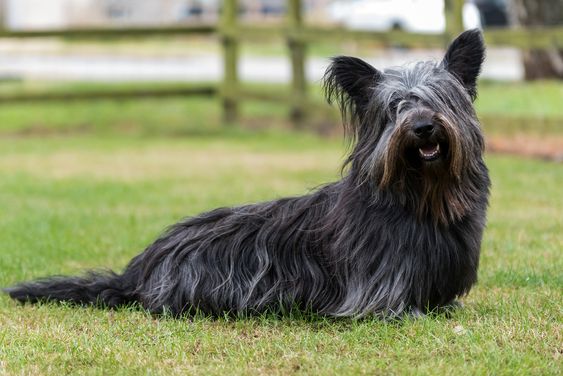
When it comes to training, Skye Terrier becomes a proficient learner. He is sensitive and responds well to a firm voice and positive reinforcement techniques, including encouragement with food, praise, and games.
Table of Contents
Breed Information
| Another Name | – |
| Origin | Scotland |
| Height | Males 23-25 cm Females 20-24 cm |
| Weight | Males 16-18 kg Females 12-16 kg |
| Fur | Stiff, long |
| Color | Black, gray, red, pale |
| Lifespan | 12-15 years |
| FCI Classification | Terriers |
| Group | Watchdogs, dogs for children, dogs for apartments, decorative dogs |
| Price | $1000-6000 |
Breed Photos
Origin History
Like his fellow terriers, the Skye was created in Great Britain. On the Isle of Skye, one of the inner Hebridean islands of Scotland. The dog was created to rid farms of den-dwelling creatures whose burrows posed a danger to livestock. Skye’s versatility allowed him to defeat vermin and keep duchesses company, both with equal success.
How did the cool little terrier become a fashionable companion? Queen Victoria, who often vacationed in Scotland, was responsible for bringing the breed to public attention. She gained further recognition when the famous portrait painter Sir Edwin Landseer depicted these dogs in his paintings. It soon became known that the Duchess would be almost embarrassed to be seen in the park without her Skye Terrier. However, the Skye was always something more than a vermin exterminator in a fancy black coat.
Appearance
The Skye Terrier is an agile and strong dog with a strong backbone and solid muscles. Adult males reach a height of 25 cm and females around 22 cm. The male dog weighs about 18 kg, and the adult female about 15 kg. The animal’s body is covered with abundant hair, which falls from both sides of the body through the oval ribs. The fur covers the forehead and eyes to serve as protection from wild plants and briars, as well as during serious encounters with other animals. The color of the coat can be black, gray, red, and pale.
Character
When it comes to training, Skye Terrier becomes a proficient learner. He is sensitive and responds well to a firm voice and positive reinforcement techniques, including encouragement with food, praise, and games.
Like any self-respecting terrier, the Skye is willing to challenge other dogs of any size. The pet should not be left alone with small furry pets such as rabbits, hamsters, guinea pigs, or gerbils. They are too much like dinner.
On the other hand, he is an excellent guard dog and more reserved than most terriers. His small size allows him to adapt to any environment, including an apartment or private home. His barking, though, can be annoying to neighbors.
The Skye Terrier expects a fair share of love and attention from its owner, not to mention respect. The animal will inform the owner of a mistake by digging and barking to express its irritation. The dog believes in a compromising relationship. If he is given the respect, affection, and attention he deserves, the pet will radiate this toward the owner.
Care
Grooming two to three times a week will prevent the formation of tangles. Owners need to check their dog’s coat after a walk, as it can function as a broom! Owners should keep their dog’s ears and teeth clean.
Training
The dog is intelligent and quickly learns new commands and rules. Skye Terrier needs daily walks. Play will solve many of the dog’s exercise needs. However, as with all breeds, the play does not satisfy its original walking instinct. Dogs that don’t go out for daily walks are more likely to show behavior problems. The Skye Terrier will also enjoy a good frolicking in a safe, open area without a leash, such as a large fenced yard.
Common Diseases
The Skye Terrier is a very healthy dog breed. However, the Skye Terrier is an achondroplastic dog. It means that he has a large body on small feet. Consequently, the dog shouldn’t jump from high surfaces as a puppy.
Nutrition
A Skye Terrier should eat dry food. Small dogs have a fast metabolism. It means they burn energy at a high rate. Small breed foods are specially formulated with appropriate levels of essential nutrients and smaller bite sizes to meet small pets’ needs. It also stimulates chewing and improves digestion. The dog should also have constant access to water.
 Dandie Dinmont Terrier
Dandie Dinmont Terrier East European Shepherd
East European Shepherd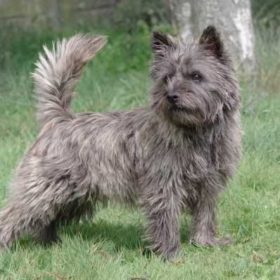 Cairn Terrier
Cairn Terrier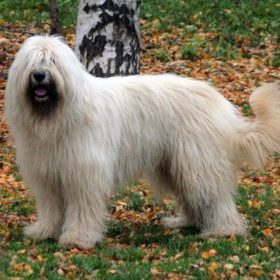 South Russian Ovcharka
South Russian Ovcharka Griffon Nivernais
Griffon Nivernais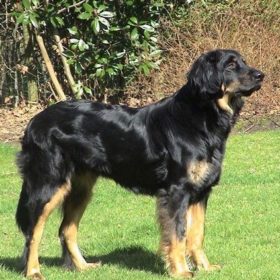 Hovawart
Hovawart